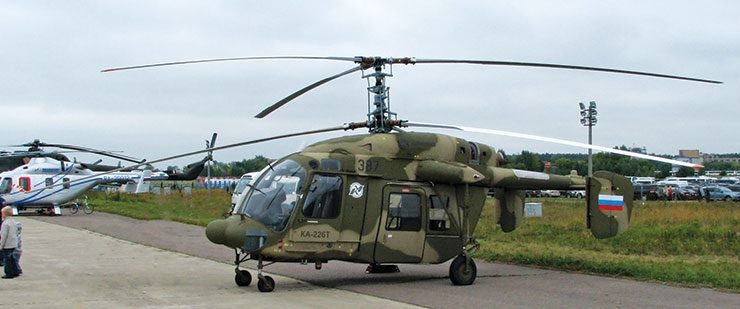
In December 2014, Russian President Vladimir Putin had offered India 200 Kamov Ka-226T multi-role utility helicopters at his maiden summit in New Delhi with Prime Minister Narendra Modi. 60 helicopters for the Indian armed forces were to be delivered in flyaway condition while 140 were to be assembled under “Make in India” programme of the BJP-led NDA government.
Since the government wanted to involve private sector in defence industry, in August 2015 the defence arm of the Anil Ambani-led Reliance Group was picked for the project by the Russian side for a Rs 6,000-crore (US$925 million) potential deal to make 197 helicopters for the Indian Army and the Indian Air Force after the Defence Acquisition Council chaired by the then Defence Minister Manohar Parrikar cleared the proposal involving Transfer of Technology (ToT).
However, after due diligence the Russians found Anil Ambani’s Reliance Group were not financially sound and reportedly sought Government of India’s guarantees. Anil Ambani was a member of business delegation accompanying Prime Minister Narendra Modi during his Moscow visit in December 2015.
However, to move ahead with the deal an intergovernmental agreement (IGA) was signed during PM Modi’s visit, leaving aside the issue of Indian JV partner, although the Russian side was keen on partnership with Hindustan Aeronautics Ltd (HAL) with which they have decades of experience as a reliable partner.
Eventually, a JV Indo-Russian Helicopters Ltd (IRHL) was setup in 2017 by HAL with 50.5 per cent and Russian Helicopters 42 per cent and Rosoboronexport 7.5 per cent shares.
According to the earlier Russian media reports the initial chopper deal involved up to 50 per cent ToT, including structure of the copter, its rotor blades and landing gear, all important metallurgy.
However, HAL which has an ambitious programme of in house designed and developed Light Utility Helicopters (LUH) for the Indian Armed Forces for which the Kamov Ka-226T choppers are rivals. Here comes the conflict of interests between the Indian aerospace giant Hindustan Aeronautics Limited and it as a partner with the Russian Helicopters in IRHL.
Talking to media on the sidelines of Aero India 2021 at Bengaluru earlier this month, Chairman and Managing Director of HAL R Madhavan declared that total indigenous content of the Ka-226T utility helicopters, to be jointly manufactured locally by India and Russia with Transfer of Technology, is between 27-33 per cent, and said the final deal is held up as the Russian proposal of 62 per cent indigenous content in assembled helicopters falls short of the tender requirement of 70 per cent.
“In Ka-226T when we talk of 70 per cent indigenous content, it is not the same as the Light Combat Aircraft (LCA) 52 per cent. The 70 per cent is of the Russian content. Engine from Safran and avionics from other countries are not accounted for in this. Balance is what we are looking and from there 70 per cent is taken. Taking the whole helicopter, the indigenous content is about 27-33 per cent,” he said in response to a question from The Hindu at Aero India.
Russians were unable to offer 70 per cent of this and they offered up to 62 per cent; that too which will come only in Phase-4 of production, according to Madhavan.
However, in Feb 2020 Russian news agency TASS reported that a roadmap for the localisation and training of Indian pilots was finalised at the DefExpo in Lucknow.
Commenting on HAL CMD’s outburst, industry sources in Bengaluru told Raksha Anirveda: “HAL is wearing two hats: as a partner in IRHL, they are interested in the deal going through. In conversations with Russian Helicopters and MoD, they are willing to take the responsibility to take the local content from 62 to 70 per cent. However as an independent helicopter manufacturer, they want to take a stand showing how the local content is higher at 52 per cent of total value in their indigenously developed LCA, as opposed to 62 per cent (or even 70 per cent) of only the Russian content in the case of Ka-226T.”
“Either way, under pressure from the Army, the MoD is going to conclude the contract for 200 helicopters this year,” sources added.
A senior retired Indian diplomat, who was privy to signing of the IGA told this author that Ka-226T was Modi government’s first agreement under his “Make in India” programme and due to bureaucratic shifting of goalposts it has so far failed to fructify, unnecessarily creating embarrassing situation.
-The writer is a Moscow-based independent analyst. The views are personal and do not necessarily reflect the views of Raksha Anirveda









